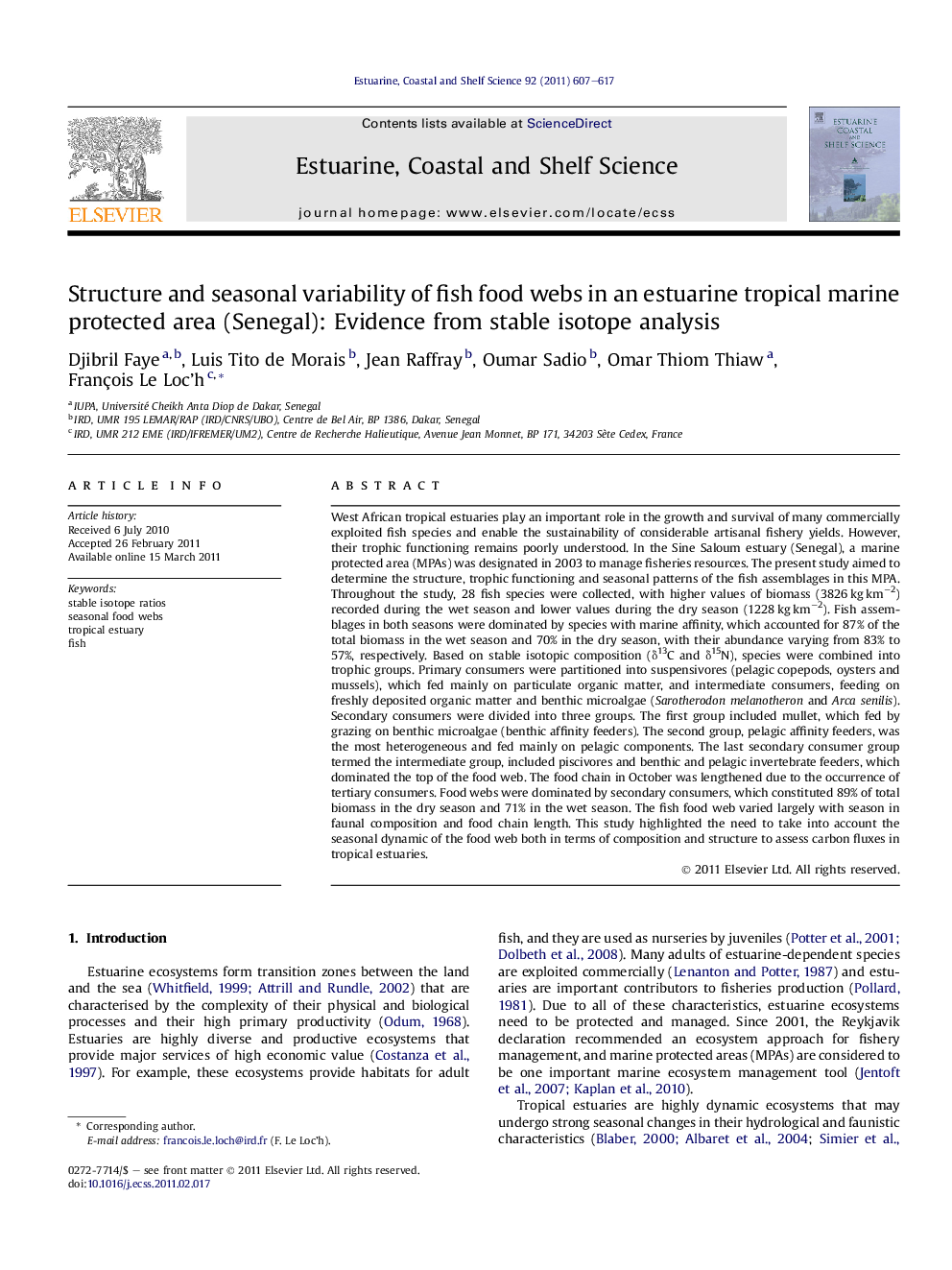| Article ID | Journal | Published Year | Pages | File Type |
|---|---|---|---|---|
| 4540490 | Estuarine, Coastal and Shelf Science | 2011 | 11 Pages |
West African tropical estuaries play an important role in the growth and survival of many commercially exploited fish species and enable the sustainability of considerable artisanal fishery yields. However, their trophic functioning remains poorly understood. In the Sine Saloum estuary (Senegal), a marine protected area (MPAs) was designated in 2003 to manage fisheries resources. The present study aimed to determine the structure, trophic functioning and seasonal patterns of the fish assemblages in this MPA. Throughout the study, 28 fish species were collected, with higher values of biomass (3826 kg km−2) recorded during the wet season and lower values during the dry season (1228 kg km−2). Fish assemblages in both seasons were dominated by species with marine affinity, which accounted for 87% of the total biomass in the wet season and 70% in the dry season, with their abundance varying from 83% to 57%, respectively. Based on stable isotopic composition (δ13C and δ15N), species were combined into trophic groups. Primary consumers were partitioned into suspensivores (pelagic copepods, oysters and mussels), which fed mainly on particulate organic matter, and intermediate consumers, feeding on freshly deposited organic matter and benthic microalgae (Sarotherodon melanotheron and Arca senilis). Secondary consumers were divided into three groups. The first group included mullet, which fed by grazing on benthic microalgae (benthic affinity feeders). The second group, pelagic affinity feeders, was the most heterogeneous and fed mainly on pelagic components. The last secondary consumer group termed the intermediate group, included piscivores and benthic and pelagic invertebrate feeders, which dominated the top of the food web. The food chain in October was lengthened due to the occurrence of tertiary consumers. Food webs were dominated by secondary consumers, which constituted 89% of total biomass in the dry season and 71% in the wet season. The fish food web varied largely with season in faunal composition and food chain length. This study highlighted the need to take into account the seasonal dynamic of the food web both in terms of composition and structure to assess carbon fluxes in tropical estuaries.
► Tropical estuaries play an important role in the live cycle of many exploited fish. ► We determine fish assemblage structure in a West African estuary. ► Stable isotope ratios allowed to gather species in trophic groups. ► Fish food web exhibited large seasonal variation of composition and structure.
